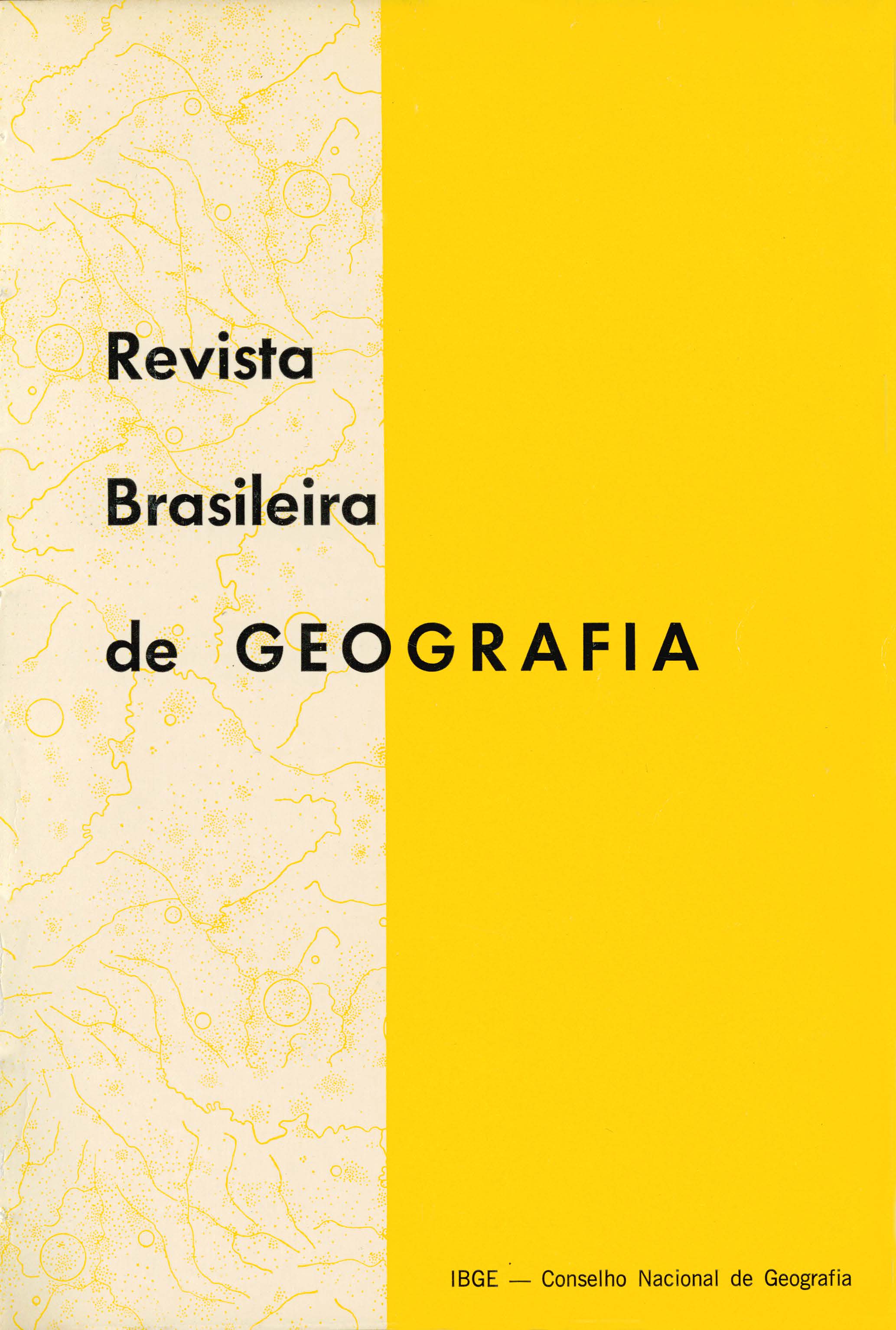Proposição metodológica para revisão da divisão do Brasil em regiões funcionais urbanas
Palavras-chave:
Geografia regional, Geografia urbana, Divisões territoriais e administrativasResumo
The first model of Brazil in Urban Functional Regions was published by IBGE in 1972, whose objective was to feature the structure of the Brazilian towns network. This basic peculiarity requires, however, periodic review in order to bring up to date, having in view the transformations resulting from the development of the country, aiming to furnish subsidies to the government socioeconomic planning. Such is the purpose of the methodology here presented, where concepts of regionalization and theoretic formulations are discussed and the operational procedure utilized to testify in field the general propositions of the urban regions model are presented.
The concept of functional region was seen as a matter of classification of area units spatially contiguous, whose base is given by a set of attributes able to indicate relationships among spatial units. To this purpose the technique of grouping of attributes with common characteristics serves to establish hierarchy of classes, so defining functional regions in accordance with intensity and the degree of connections among urban centers.
As convergence and divergence point of varying-fluxes, the town has complementary external areas which will classified starting from three general theoretic lines, seeking to reveal a structure of urban relationships which admits process and mechanisms of various nature. The resulting classification will define a hierarchic model of urban centers and its regional organization. The mentioned general lines refer to a theory of centrality, of commercialization of rural products and of diffusion of innovations.
Thus, the first fundamental criterion treats of the distribution of goods and services to the population, based on the central places theory. In this one the town plays the central functions linked to the tertiary sector oi economy to the population of the urban center outward areas. This distribution, which take in account the supply and demand of goods and services, obeys to a proper mechanism of threshold and range which are processed in a hierarchic way.
The second aspect refers to a commercialization of rural products in which the towns play a role of gathering centers, betterment and distribution of agricultural product. Such a flux is under the influence of alterations due to the characteristics inherent to the production, of the products itself, and of the consumption. In spite of the complexity evolved in the creation of a typology of urban centers in this aspect, it is possible to define an urban hierarchy according to the dominant role of the town in the fulfillment of its commercialization functions of the rural products: gathering centers, dispatching centers, exporting centers and metropolitan centers.
The third theoretic line refers to a process of diffusion of innovations, dynamization element of urban networks in which factors as fluxes of information - economic and social - involve three distinct effects: nearness, hierarchic and logistic curve. The item and the adoption unit deserve a special attention, for they imply in distinct processes of diffusion. To determinate the urban hierarchy, the functions potentially innovators were associated to the stage of development, evaluating some specific items of innovation (able to generate transformations) in urban centers (as adoption units), linked to a specific channel of communication (agent) to a given social structure. In lower hierarchic level the functions potentially innovators should supply the fundamental needs in order to remove cultural and endemic hindrances; above this level would be the functions linked to the technique and financial assistance and of association of interest in the rural world; in a third level w~s considered the function of diffusing education, and finally, in a more difficult degree, the communication function through specific channels.
The theoretic considerations presented has led the operational development, establishing a technique to be utilized with the application of direct questionaries. In the preliminary phase, four functional regions will be submitted to a test: Sobral, Juazeiro/Petrolina, Bauru and Ponta Grossa.
Initially it was surveyed the functional equipment of 269 towns, in order to choose those will be analyzed separately according to centrality, commercialization of rural products of influence. available data. The statistical tests achieved has revealed the consistence of minimum clustering functions indicators of centrality.
The pilot-questionary should be applied on the chosen towns; the collected information will be analyzed separately according to centrality, commercialization of rural products of influence. The following step will be the definition of a single division in functional regions which could depict the structure and complexity of the spatial organization of the Brazilian urban network, which is the main purpose of this work.






